Globose Technology Solutions Pvt Ltd (GTS) is an Al data collection Company that provides different Datasets like image datasets, video datasets, text datasets, speech datasets, etc. to train your machine learning model.
Don't wanna be here? Send us removal request.
Text
Video Data Collection Services: Powering the Advancement of AI and Machine Learning
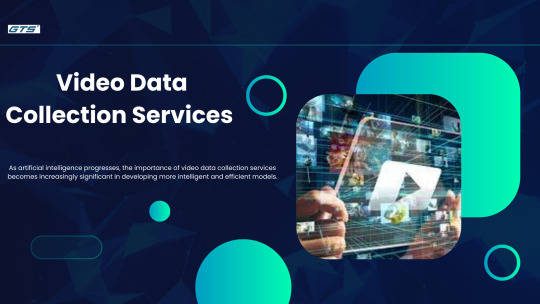
Introduction:
In the contemporary data-centric landscape, video data has become an invaluable asset for the training of artificial intelligence (AI) and machine learning (ML) models. The increasing prevalence of technologies such as computer vision, facial recognition, autonomous vehicles, and real-time surveillance systems has heightened the demand for high-quality video data. This is where video data collection services are essential, as they facilitate the acquisition, curation, and organization of video data to support advanced AI and ML applications.
What Are Video Data Collection Services?
Video Data Collection Services encompass the systematic gathering and structuring of video footage to develop organized datasets for AI and ML models. These services are tailored to collect a diverse range of video data types, including:
Indoor and outdoor settings
Human interactions and activities
Vehicle and traffic patterns
Facial expressions and gestures
Object detection and tracking
Natural scenes and landscapes
The gathered data is subsequently annotated and labeled, rendering it suitable for training AI models in various tasks such as object recognition, behavior analysis, and autonomous navigation, among others.
The Significance of Video Data Collection
1. Training Artificial Intelligence Models
Artificial intelligence models necessitate extensive volumes of high-quality data to enhance their accuracy and performance. Video data provides a wealth of information, encompassing motion, color, depth, and texture, which aids AI in comprehending intricate real-world situations more effectively.
2. Advancing Computer Vision
Computer vision models significantly depend on annotated video data to identify objects, monitor movements, and interpret human actions. The collection of video data is crucial for creating comprehensive datasets for these applications.
3. Developing Autonomous Systems
Autonomous vehicles, drones, and robotic systems rely on real-time video feeds to make instantaneous decisions. High-quality video datasets are vital for training these systems to accurately respond to their surroundings.
4. Enhancing Facial and Gesture Recognition
AI models focused on facial recognition and emotion detection that utilize video require varied datasets that encompass different lighting conditions, angles, and expressions.
Types of Video Data Collection Services
1.Crowdsourced Data Collection
Organizations utilize crowdsourcing platforms to obtain video data from a wide array of individuals and settings. This approach fosters the development of a more comprehensive and impartial dataset.
2.Controlled Environment Collection
Data is gathered in a studio or regulated environment where variables such as lighting, background, and participant actions can be managed effectively.
3.Real-World Data Collection
This method involves recording video data from actual situations, including traffic intersections, retail establishments, or outdoor settings, to train AI models for real-world applications.
4.Sensor-Based Data Collection
This technique employs specialized cameras (such as thermal and night vision) and LiDAR technology to capture intricate video data for sophisticated AI applications.
Key Benefits of Video Data Collection Services
Scalability: Enables the rapid and efficient collection of large quantities of video data.
Diversity: Ensures a well-rounded dataset by incorporating data from various locations, demographics, and environments.
Customization: Allows for data collection to be adapted to meet specific project requirements.
Annotation and Labeling: The collected video data is frequently pre-processed with annotations, rendering it ready for AI use.
Improved Model Accuracy: Enhanced data quality contributes to superior AI performance and decision-making capabilities.
Applications of Video Data Collection
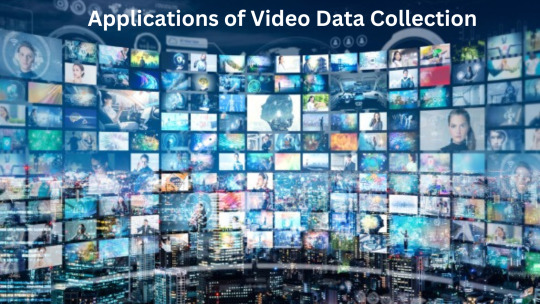
Autonomous Vehicles – Training AI systems to recognize pedestrians, vehicles, and traffic signs.
Security and Surveillance – Facilitating real-time threat detection and activity monitoring.
Healthcare – Observing patient behavior and diagnosing conditions based on physical movements.
Retail – Analyzing customer behavior and optimizing store layouts.
Sports and Fitness – Monitoring athlete performance and conducting motion analysis.
Challenges in Video Data Collection
Privacy Issues – The recording of human activities presents ethical and legal challenges concerning data privacy.
Data Integrity – Factors such as inadequate lighting, low resolution, and ambient noise can compromise data quality.
Storage and Processing Requirements – The substantial size of video files necessitates considerable storage capacity and computational resources for effective processing.
Bias and Representation – A lack of diversity within the dataset may result in biased outcomes in AI applications.
Future of Video Data Collection
With the ongoing advancements in artificial intelligence and machine learning, the need for video data collection services is expected to increase significantly. Innovations such as 5G technology, edge computing, and high-definition cameras will further improve the efficiency and quality of video data acquisition. Additionally, the incorporation of synthetic data and augmented reality will create new avenues for producing intricate video datasets for AI training purposes.
Conclusion
As artificial intelligence progresses, the importance of video data collection services becomes increasingly significant in developing more intelligent and efficient models. Whether applied in autonomous driving, intelligent surveillance, or healthcare advancements, high-quality video datasets serve as the cornerstone of AI progress. Collaborating with a reputable data provider such as Globose Technology Solutions guarantees access to dependable, diverse, and superior video data for innovative AI applications.
0 notes
Text
0 notes
Text
Why Image Data Annotation Matters in Machine Learning

Introduction
In the age of artificial intelligence (AI) and machine learning (ML), the capability of machines to perceive and comprehend visual data has revolutionized various sectors, including healthcare, autonomous driving, retail, and agriculture. For machines to accurately recognize and interpret images, they must be trained on meticulously labeled datasets. This necessity highlights the significance of image data annotation.
Image Data Annotation involves the process of assigning labels to visual data, such as images and videos, by incorporating relevant metadata to facilitate the training of machine learning models. By tagging objects, delineating boundaries, and categorizing elements within an image, annotators lay the foundation for computer vision systems to identify and classify objects, recognize patterns, and make informed decisions based on visual information.
This blog will delve into the intricacies of image data annotation, examining its significance, methodologies, tools, challenges, and applications. By the conclusion, you will possess a thorough understanding of how image annotation underpins contemporary AI and computer vision models.
What is Image Data Annotation?
Image data annotation is the practice of labeling and tagging images with pertinent information, enabling machine learning models to learn effectively. The annotated data acts as the ground truth, assisting models in recognizing patterns and enhancing their accuracy over time.
For example, an autonomous vehicle depends on annotated images to differentiate between pedestrians, vehicles, traffic signs, and other objects encountered on the road. Likewise, medical AI models utilize annotated MRI scans to detect tumors or other irregularities.
Key Components of Image Annotation:
Object Identification – Recognizing and marking objects within an image.
Classification – Assigning labels to objects (e.g., "cat," "dog," "car").
Localization – Indicating the position of objects using bounding boxes or other markers.
Segmentation – Defining the boundaries of objects at the pixel level.
Significance of Image Data Annotation
Precise image annotation is vital for the development of high-performing AI models. Machine learning algorithms depend on extensive amounts of high-quality annotated data to discern patterns and generate accurate predictions.
Reasons for the Critical Nature of Image Data Annotation:
Model Precision: The accuracy of image annotations directly influences the model's capability to identify objects and make predictions effectively.
Supervised Learning: The majority of computer vision models operate on supervised learning principles, necessitating labeled datasets.
Bias Mitigation: Proper annotation contributes to the creation of balanced and unbiased datasets, thereby avoiding distorted outcomes.
Real-World Performance: High-quality annotations enhance a model’s functionality in intricate environments, such as those with poor lighting or crowded settings.
Improved Automation: Accurate data enables AI systems to perform automated tasks, including medical diagnostics, facial recognition, and traffic surveillance.
Methods of Image Data Annotation
Various techniques exist for annotating image data, each tailored to specific tasks and model needs.
A. Classification
In this approach, an entire image is assigned a singular label.
Example: Designating an image as "cat" or "dog."
B. Object Detection
This technique focuses on identifying and locating objects within an image through the use of bounding boxes.
Example: Enclosing a car within a box in a street scene.
C. Semantic Segmentation
This method entails labeling each pixel in an image according to its class.
Example: Distinguishing between the road, sidewalk, and vehicles in a traffic scene.
D. Instance Segmentation
Similar to semantic segmentation, this method differentiates between individual objects of the same class.
Example: Identifying separate cars in a traffic image.
E. Landmark Annotation
This involves marking specific points of interest within an image.
Example: Annotating key facial points for facial recognition purposes.
F. Polygonal Annotation
This technique outlines complex shapes using polygons for enhanced accuracy.
Example: Annotating irregularly shaped objects such as trees or human figures.
Tools for Image Data Annotation
A variety of tools have been created to facilitate the image annotation process. These tools incorporate features such as automation, collaboration, and AI-enhanced annotation to improve both accuracy and efficiency.
Notable Image Annotation Tools:
LabelImg – An open-source application designed for creating bounding boxes.
CVAT (Computer Vision Annotation Tool) – A robust tool suitable for annotating both video and image data.
VGG Image Annotator (VIA) – A lightweight and user-friendly annotation tool.
Labelbox – A cloud-based solution that supports scalable annotation efforts.
SuperAnnotate – An AI-enhanced annotation platform equipped with sophisticated automation capabilities.
Amazon SageMaker Ground Truth – A managed annotation service that combines automation with human oversight.
Roboflow – A comprehensive platform for organizing and annotating datasets.
Challenges in Image Data Annotation
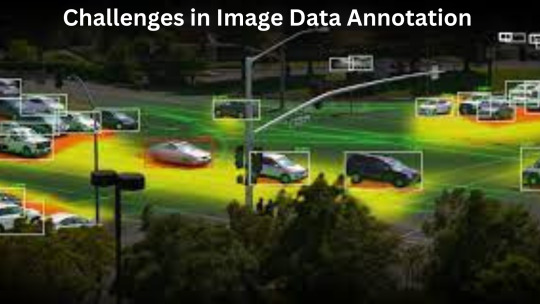
In spite of the progress made in annotation tools and methodologies, several challenges remain:
A. Scale and Volume
Extensive datasets necessitate considerable time and resources for annotation.
Crowdsourcing or AI-assisted methods are frequently employed to handle large-scale projects.
B. Quality and Consistency
Maintaining consistency across annotations is essential for optimal model performance.
Human errors and ambiguities can adversely affect quality.
C. Class Imbalance
Disproportionate representation of various classes can result in biased models.
Meticulous dataset curation and balancing are imperative.
D. Edge Cases and Complexity
Annotating complex objects, overlapping items, and occlusions presents significant challenges.
Advanced methods such as polygonal and instance segmentation are employed to tackle these issues.
E. Cost and Time
Manual annotation is both costly and time-intensive.
While automation and AI-assisted annotation can lower expenses, they may also risk compromising accuracy.
Applications of Image Data Annotation
Image data annotation has significantly impacted various sectors, facilitating innovative AI applications:
A. Autonomous Vehicles
Utilization of object detection and segmentation for identifying traffic elements, pedestrians, and road signs.
B. Healthcare
Analysis of medical images to detect diseases and abnormalities.
C. Retail
Implementation of product recognition and inventory management through computer vision technologies.
D. Agriculture
Monitoring of crops and detection of diseases via drone imagery.
E. Security and Surveillance
Application of facial recognition and anomaly detection within security systems.
Future of Image Data Annotation
The trajectory of image annotation will be influenced by:
AI-Driven Automation – Advanced AI models will take on more intricate annotation tasks.
Crowdsourcing and Gamification – Involving contributors through engaging, gamified platforms.
Synthetic Data Growth – An increased dependence on computer-generated datasets.
Edge Computing – Facilitating real-time annotation at the edge for expedited processing.
Conclusion
Image data annotation serves as the foundation for contemporary computer vision and artificial intelligence applications at Globose Technology Solutions. The availability of high-quality annotated data empowers machines to identify objects, comprehend environments, and make informed decisions. Despite ongoing challenges related to scalability and consistency, progress in AI-assisted annotation and the generation of synthetic data is reshaping the field. By adhering to best practices and utilizing automation, organizations can develop strong computer vision models that foster innovation and enhance efficiency across various sectors.
0 notes
Text
Customized Learning Dataset for AI-Driven Adaptive Educational Systems.
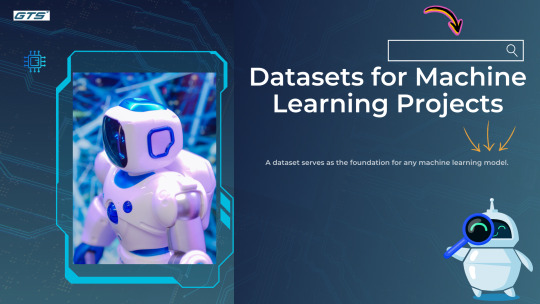
Introduction:
Datasets for Machine Learning Projects models derive their effectiveness from the quality of the data utilized during training. A dataset of high caliber is essential for the development of precise and efficient machine learning models. Regardless of whether the focus is on supervised learning, unsupervised learning, or reinforcement learning, the selection of an appropriate dataset can profoundly influence the model's overall performance.
This article will examine a variety of datasets suitable for machine learning initiatives, encompassing image datasets, text datasets, tabular datasets, and others. Additionally, we will discuss sources for these datasets, criteria for selecting the most suitable dataset, and best practices for their management.
Significance of Quality Datasets
The dataset is a fundamental component of the machine learning workflow. The following points illustrate the importance of selecting the right dataset:
Model Performance - A well-structured and diverse dataset enables models to learn effectively and generalize to new, unseen data.
Bias and Fairness - Datasets that are of poor quality or exhibit bias can result in predictions that are unfair or inaccurate.
Feature Engineering - High-quality datasets offer significant features that improve the predictive capabilities of models.
Scalability - Datasets that are properly formatted facilitate scalability and adaptability for larger models.
Categories of Datasets
Machine learning datasets can be classified into several types based on their structure and intended use. Below are the most prevalent categories:
1. Image Datasets
These datasets consist of labeled or unlabeled images utilized for tasks such as classification, segmentation, object detection, and generative modeling.
Notable Image Datasets:
MNIST - A dataset for recognizing handwritten digits.
CIFAR-10/100 - A collection of small images for object classification.
ImageNet - A comprehensive image dataset containing millions of labeled images.
COCO - Designed for object detection, segmentation, and captioning tasks.
Open Images Dataset - A dataset featuring annotations for object detection and classification.
2. Text Datasets
Text datasets play a crucial role in natural language processing (NLP) applications, including sentiment analysis, text generation, machine translation, and the development of chatbots.
Notable Text Datasets:
IMDB Reviews - A dataset specifically designed for sentiment analysis.
Wikipedia Dumps - Utilized for language modeling and information retrieval purposes.
Common Crawl - A web crawl dataset that supports various NLP applications.
SQuAD (Stanford Question Answering Dataset) - A dataset aimed at enhancing reading comprehension and question-answering models.
TREC - A dataset focused on information retrieval and ranking tasks
3. Audio and Speech Datasets
Audio datasets are vital for tasks such as speech recognition, music generation, and sound classification.
Notable Audio Datasets:
LibriSpeech - A comprehensive corpus of English speech intended for automatic speech recognition (ASR) models.
VoxCeleb - A dataset featuring celebrity speech, used for speaker recognition.
Common Voice (Mozilla) - An open-source multilingual speech dataset.
UrbanSound8K - A dataset designed for classifying sounds in urban settings.
4. Tabular Datasets
Tabular datasets consist of structured data frequently employed in classification, regression, and forecasting tasks.
Notable Tabular Datasets:
Titanic Dataset - A dataset utilized for classification tasks, particularly in predicting survival.
Iris Dataset - A well-known dataset used for clustering and classification purposes
UCI Machine Learning Repository - A diverse collection of datasets catering to various machine learning tasks.
5. Time Series Datasets
Time series datasets are essential for forecasting and analyzing trends across various sectors, including finance, healthcare, and Internet of Things (IoT) applications.
Notable Time Series Datasets:
Yahoo Finance Stock Prices - Utilized for financial modeling and stock market predictions.
COVID-19 Dataset - Provides time series data for the analysis of the pandemic.
Electricity Load Forecasting - A dataset designed for predicting energy demand.
Weather Dataset - Contains meteorological data for various forecasting applications.
6. Reinforcement Learning Datasets
Reinforcement learning (RL) datasets are employed to train agents within both simulated and real-world contexts.
Noteworthy RL Datasets:
OpenAI Gym - A compilation of simulated environments tailored for reinforcement learning.
DeepMind Control Suite - A set of benchmark tasks specifically for reinforcement learning.
MuJoCo - A physics-based simulator utilized in reinforcement learning.
Atari Games Dataset - An RL dataset leveraged to train AI agents in gaming environments.
Best Practices for Engaging with Datasets
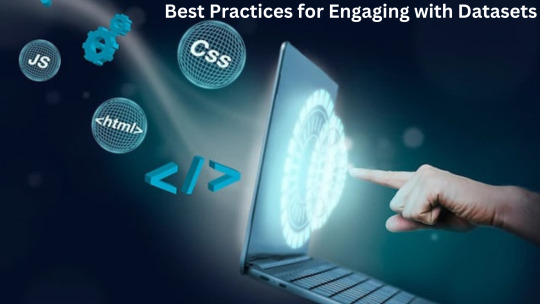
1. Data Cleaning and Preparation
Prior to utilizing a dataset, it is essential to ensure that it is clean and appropriately formatted. Typical preparation tasks include:
Addressing missing values
Eliminating duplicates
Normalization and standardization
Feature engineering
2. Data Augmentation
For datasets involving images, text, and audio, augmentation methods can enhance the size and variety of training data.
Image Augmentation: Flipping, rotating, cropping.
Text Augmentation: Synonym substitution, word rearrangement.
Audio Augmentation: Adding noise, altering pitch.
3. Dataset Partitioning
It is crucial to partition the dataset into training, validation, and test sets effectively.
Training Set - Utilized for model training.
Validation Set - Employed for hyperparameter tuning.
Test Set - Used for final assessment.
4. Addressing Imbalanced Datasets
In classification tasks, it is important to ensure that classes are balanced to avoid model bias.
Implement oversampling (e.g., SMOTE) or undersampling methods.
Utilize weighted loss functions.
5. Ethical Considerations
It is vital to ensure that datasets are sourced ethically, represent diverse populations, and do not introduce biases into machine learning models.
Conclusion,
datasets serve as the fundamental component of machine learning initiatives. Regardless of whether the focus is on computer vision, natural language processing, time series analysis, or reinforcement learning, the selection of an appropriate dataset can greatly influence the effectiveness of your model. By utilizing publicly accessible datasets and adhering to established Globose Technology Solutions best practices for data preprocessing and augmentation, one can develop more precise and resilient machine learning models.
0 notes
Text
0 notes
Text
Collection of Video Data for AI Training in Both Indoor and Outdoor Environments.

Introduction:
In the swiftly changing domain of artificial intelligence (AI) and machine learning (ML), the necessity for high-quality, varied, and precisely labeled video datasets has reached unprecedented levels. These datasets form the cornerstone for training models that drive applications from self-driving cars to sophisticated medical diagnostics. Video data collection services are essential in assembling these datasets, guaranteeing that AI systems function effectively and reliably.
The Significance of Video Data in AI and ML
Video Data Collection Services provides a comprehensive source of information, capturing both temporal dynamics and spatial details that static images fail to convey. This depth allows AI models to comprehend intricate activities, monitor object movements, and identify patterns over time. For example, in the realm of autonomous driving, the analysis of video sequences enables vehicles to predict pedestrian actions and adapt to changing road conditions. Likewise, in the healthcare sector, video analysis can facilitate the observation of patient behaviors and the real-time detection of anomalies.
Challenges in Video Data Collection
The process of gathering video data for AI applications entails several challenges:
Volume and Storage: Video files are considerably larger than images or text, requiring extensive storage solutions and effective data management strategies.
Annotation Complexity: The labeling of video data is more complex due to its temporal nature, necessitating frame-by-frame annotation to accurately capture subtleties in movement and interactions.
Privacy Concerns: Recording in both public and private settings raises ethical and legal dilemmas, particularly when individuals can be identified. Adhering to privacy regulations is of utmost importance.
Diversity and Bias: It is essential to create a diverse dataset that encompasses a variety of scenarios, environments, and demographics to mitigate biases in AI models.
GTS: Pioneering Excellence in Video Dataset Acquisition
Global Technology Solutions (GTS) effectively tackles the challenges associated with video data collection by providing extensive services specifically designed for artificial intelligence (AI) and machine learning (ML) applications. Their methodology includes systematic recording, thorough analysis, and accurate labeling, converting unprocessed footage into datasets that machines can interpret. With operations in over 89 countries and the successful completion of more than 300 projects, GTS guarantees a high standard of excellence and diversity in its data collection initiatives.
Varied Categories of Video Collection
GTS possesses a broad range of expertise across multiple video collection categories, each tailored to meet distinct industry needs:
Human & Medical Video Collections: This category involves capturing human postures, medical procedures (such as endoscopy), and interactions during meetings or virtual conferences. These datasets are crucial for the advancement of healthcare applications and models of human-computer interaction.
Construction & Industrial Safety Collections: This involves documenting safety protocols, equipment usage, and potential hazards within industrial environments. The data collected is instrumental in training AI systems for risk assessment and monitoring safety compliance.
Transportation & Public Safety Collections: This category focuses on recording traffic patterns, public transportation usage, and emergency response scenarios, thereby enhancing urban planning, traffic management, and public safety efforts.
Specialized Video Collections: These are customized datasets that concentrate on specific areas such as agricultural monitoring, environmental conservation, and wildlife tracking, facilitating AI applications in sustainability and ecological research.
Retail & Customer Behavior Collections: This involves analyzing customer movements, product interactions, and queue formations in retail settings to optimize store layouts and enhance customer experiences.
Educational & Classroom Collections: This category observes classroom interactions, teaching methodologies, and student engagement, contributing to the development of AI tools that support educational research and personalized learning.
Entertainment and Media Collections: Assembling footage from performances, sporting events, and media productions to facilitate AI training in content creation, editing, and audience analysis.
Residential and Smart Home Collections: Observing daily activities in smart homes to improve home automation systems, security features, and energy efficiency solutions.
Tourism and Travel Collections: Analyzing tourist behaviors, interactions with landmarks, and travel patterns to enhance AI-driven tourism services and destination management.
Sports and Fitness Training Collections: Capturing athletic performances, training sessions, and fitness routines to advance AI applications in coaching, performance analysis, and injury prevention.
Cultural and Social Event Collections: Recording festivals, ceremonies, and social gatherings to safeguard cultural heritage and examine social dynamics through AI.
Aeronautics and Space Research Collections: Collecting video data from aerospace experiments, simulations, and missions to bolster AI research in aviation and space exploration.
Ensuring Quality and Compliance

GTS utilizes sophisticated tools and methodologies to guarantee the highest standards in video data collection:
Video Dataset Collection Tool: A proprietary platform designed to enable accurate collection and annotation, ensuring datasets align with specific project requirements.
Privacy Measures: Enforcing protocols to anonymize individuals and adhere to global privacy regulations, addressing ethical considerations in data collection.
Diversity Strategies: Acquiring data from diverse regions and demographics to create well-rounded datasets, reducing biases in AI model training.
The Future of Video Data Collection
As AI continues to permeate various industries, the demand for specialized and high-quality video datasets is expected to increase. Video data collection services, such as those provided by GTS, are crucial in fulfilling this need, laying the groundwork for AI systems that are precise, ethical, and effective.
Conclusion,
Video data collection services play a crucial role in the progression of artificial intelligence and machine learning applications. By tackling the fundamental challenges and guaranteeing the acquisition of varied, high-quality data, organizations such as Globose Technology Solutions are facilitating innovations that will influence the future across various sectors.
0 notes
Text
Enhancing the Accuracy of AI Models through Superior Image Annotations.
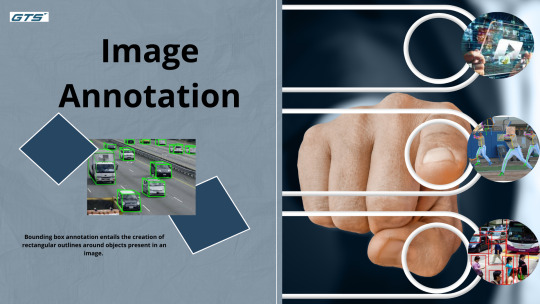
Introduction:
In the era of artificial intelligence and machine learning, image annotation is essential for enabling machines to perceive and comprehend the world in a manner akin to human understanding. This capability is vital for applications ranging from autonomous vehicles to facial recognition technologies and medical diagnostics, as the effectiveness of AI models in interpreting images is significantly dependent on the quality of the annotation provided.
What is Image Annotation?
Image Annotation refers to the practice of assigning metadata to images to facilitate the training of machine learning models. By identifying and labeling objects, regions, or characteristics within an image, annotation aids AI systems in recognizing patterns, distinguishing objects, and generating accurate predictions.
Various annotation techniques include:
Bounding Boxes: Enclosing objects within rectangles to assist AI in their detection.
Semantic Segmentation: Classifying each pixel in an image for detailed analysis.
Polygons and Key Points: Employed for identifying irregular shapes and landmarks in facial recognition tasks.
3D Cuboids: Assists AI models in grasping depth and the dimensions of objects.
Polyline Annotation: Utilized in lane detection for self-driving vehicles.
Why is Image Annotation Important?
Without adequately labeled data, machine learning models face challenges in effectively learning patterns. High-quality annotation guarantees:
Improved Accuracy: Superior training data results in more accurate AI predictions.
Enhanced Automation: Facilitates AI-driven automation across various sectors, including healthcare, retail, and transportation.
Safety and Reliability: Crucial for AI applications such as autonomous vehicles, where precision is paramount.
Types of Image Annotation Techniques
A variety of annotation techniques address distinct needs and complexities associated with image data.
Bounding Box Annotation
Bounding box annotation entails the creation of rectangular outlines around objects present in an image. This method is extensively utilized for object detection tasks, facilitating the identification and localization of objects within a scene. Bounding boxes are particularly advantageous for detecting objects with regular geometries and are computationally efficient for training models.
Semantic Segmentation
Semantic segmentation involves assigning a class label to each individual pixel in an image, which allows for a comprehensive understanding of the scene. This technique is vital for applications that demand precise localization, such as autonomous driving, where it is critical to differentiate between roads, sidewalks, and obstacles. Semantic segmentation offers pixel-level classification, enabling models to grasp the context and interrelations among various objects within an image.
Polygon Annotation
Polygon annotation consists of delineating objects with irregular shapes by utilizing a series of connected points to form a polygonal boundary. This approach provides enhanced accuracy for annotating complex objects compared to bounding boxes, as it closely adheres to the contours of the object. Polygon annotation is particularly useful for tasks that require precise object localization, such as in medical imaging and satellite imagery analysis.
Keypoint Annotation
Keypoint annotation identifies specific points of interest within an object, such as facial landmarks (eyes, nose, mouth) or joint positions in human pose estimation. This technique is crucial for applications like facial recognition, gesture recognition, and activity analysis, where understanding the spatial arrangement of key features is essential.
Cuboid Annotation
Cuboid annotation expands bounding boxes into three dimensions, offering depth information regarding objects.
Numerous sectors gain advantages from image annotation, such as:
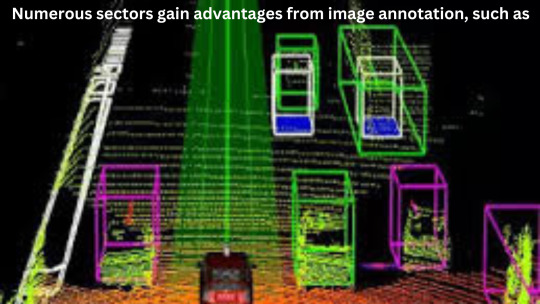
Healthcare: AI-driven diagnostics, tumor identification, and analysis of medical imaging.
Autonomous Vehicles: Lane identification, recognition of pedestrians, and detection of obstacles.
Retail and E-commerce: Visual search capabilities, product classification, and virtual fitting experiences.
Agriculture: Monitoring of crops, identification of pests, and forecasting of yields.
Selecting an Appropriate Image Annotation Partner
For organizations aiming to incorporate AI, collaborating with a specialized annotation service like GTS AI can significantly enhance outcomes. Professional annotation services offer:
Scalability: Efficient management of extensive data volumes.
Quality Assurance: Guaranteeing accurate and uniform annotations.
Security and Compliance: Safeguarding sensitive information through adherence to industry-standard security protocols.
Conclusion
Image annotation serves as the cornerstone of advancements in computer vision and AI. Whether engaged in medical AI, autonomous vehicle technology, or e-commerce solutions, high-quality annotation is crucial for optimal AI model performance. Investing in expert annotation services enables businesses to fully harness the potential of AI and maintain a competitive Globose Technology Solutions.
0 notes
Text
0 notes
Text
A Dataset for Monitoring Historical and Real-Time Air Quality to Support Pollution Prediction Models
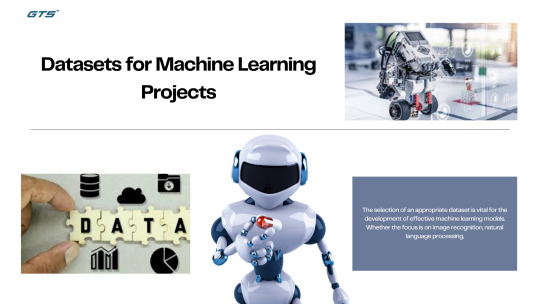
Introduction
Datasets for Machine Learning Projects. The effectiveness of any machine learning initiative is significantly influenced by the quality and relevance of the dataset utilized for model training. Choosing an appropriate dataset is essential for attaining precise predictions and deriving valuable insights. This detailed guide will examine different categories of datasets, sources for obtaining them, methods for data preprocessing, and recommended practices for selecting datasets in machine learning endeavors.
Significance of Datasets in Machine Learning
A well-organized dataset is fundamental for the training of machine learning models. An appropriate dataset contributes to:
Enhancing model accuracy
Minimizing bias and overfitting
Improving generalization
Yielding valuable insights
Categories of Machine Learning Datasets
1. Structured vs. Unstructured Datasets
Structured Data: Data that is systematically arranged in a tabular format, consisting of rows and columns (e.g., spreadsheets, databases).
Unstructured Data: Data that lacks a predefined structure (e.g., images, videos, text, and audio).
2. Labeled vs. Unlabeled Datasets
Labeled Data: Data that includes distinct input-output pairs, utilized in supervised learning.
Unlabeled Data: Data that does not have labeled outcomes, employed in unsupervised learning.
3. Open vs. Proprietary Datasets
Open Datasets: Datasets that are publicly accessible for research and training purposes.
Proprietary Datasets: Exclusive datasets owned by businesses or organizations.
Notable Datasets for Machine Learning Initiatives

1. Image Datasets
MNIST: A dataset comprising handwritten digits intended for classification tasks.
CIFAR-10 & CIFAR-100: A collection of small images designed for classification purposes.
ImageNet: A comprehensive dataset utilized in deep learning applications.
COCO: A dataset focused on object detection and image segmentation.
2. Text Datasets
IMDb Reviews: A dataset used for sentiment analysis.
20 Newsgroups: A dataset for text classification.
SQuAD: A dataset designed for question-answering tasks.
3. Audio Datasets
LibriSpeech: An extensive collection of speech recordings.
Common Voice: An open-source dataset aimed at speech recognition.
4. Tabular Datasets
Titanic Dataset: A dataset used to predict survival outcomes on the Titanic.
Iris Dataset: A well-known dataset utilized for classification.
UCI Machine Learning Repository: A diverse collection of datasets addressing various machine learning challenges.
5. Healthcare Datasets
MIMIC-III: A dataset containing data from ICU patients.
COVID-19 Open Research Dataset: A dataset providing information for COVID-19 research.
Data Preprocessing and Cleaning
Raw datasets frequently contain issues such as missing values, duplicates, and extraneous noise. The preprocessing phase is essential for ensuring data integrity and preparing it for machine learning applications. Key steps involved include:
Addressing Missing Values: Implement imputation methods.
Eliminating Duplicates: Remove redundant entries.
Normalizing Data: Adjust the scale of numerical features.
Feature Engineering: Identify and extract pertinent features.
Guidelines for Selecting a Dataset
Relevance: Opt for datasets that align with the specific problem being addressed.
Size and Quality: Confirm that the dataset is sufficiently large and diverse.
Elimination of Bias: Steer clear of datasets that exhibit inherent biases.
Data Privacy: Utilize datasets that comply with legal standards.
Conclusion
The selection of an appropriate dataset is vital for the development of effective machine learning models. Whether the focus is on image recognition, natural language processing, or predictive analytics, the identification and preprocessing of the right dataset are fundamental Globose Technology Solutions achieving success. By utilizing open datasets and adhering to best practices, data scientists can enhance model performance and generate valuable insights.
0 notes
Text
0 notes
Text
Image Annotation: The Backbone of AI and Machine Learning
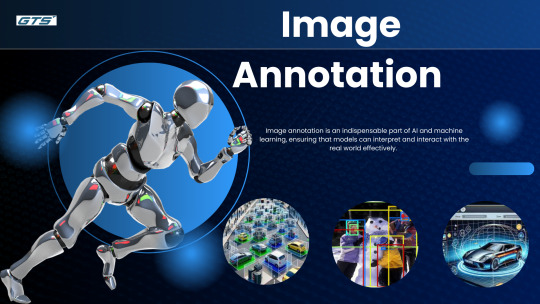
Introduction
Image Annotation serves as an essential component in the domains of artificial intelligence (AI) and machine learning (ML), facilitating the ability of machines to identify and interpret images with a level of accuracy akin to that of humans. This process is vital in various applications, ranging from autonomous vehicles to healthcare diagnostics, as it significantly contributes to the training of AI models in comprehending the visual environment.
What is Image Annotation?
Image annotation involves the systematic labeling of images with relevant metadata, thereby rendering them comprehensible to machine learning algorithms. These annotations enable AI models to detect objects, discern patterns, and recognize other features within an image. The precision of these annotations is crucial, as it directly influences the effectiveness of AI applications, underscoring its importance in the data preprocessing phase.
Types of Image Annotation
Various techniques are employed in image annotation, each designed for specific applications in artificial intelligence:
Bounding Box Annotation – This approach entails drawing rectangular boxes around objects, facilitating the detection and recognition of these objects by AI models. It is commonly utilized in object detection scenarios, such as identifying pedestrians in autonomous vehicles.
Semantic Segmentation – Rather than labeling entire objects, this technique assigns a class to each pixel within an image, enabling precise delineation of object boundaries. It is particularly beneficial in fields like medical imaging and satellite image analysis.
Keypoint Annotation – This technique involves marking specific points on objects, such as facial landmarks or human skeletal joints, which is essential for applications like facial recognition and pose estimation.
Polygon Annotation – In contrast to bounding boxes, polygon annotation offers more accurate representations of object outlines, making it suitable for identifying irregularly shaped objects, such as buildings in aerial photographs.
3D Cuboid Annotation – This method incorporates a three-dimensional perspective into objects, enhancing depth perception for AI models and aiding autonomous systems in better understanding their environment.
Polyline Annotation – This technique is utilized to indicate linear features, such as road lanes, thereby assisting self-driving vehicles in navigating effectively.
Applications of Image Annotation

Image annotation serves as a crucial element in various AI-driven sectors. Notable applications include:
Autonomous Vehicles – Self-driving technology utilizes annotated images to identify pedestrians, other vehicles, traffic signals, and potential hazards.
Healthcare – Medical AI applications leverage annotated images to identify diseases, support diagnostic processes, and improve interpretations in radiology.
Retail & E-commerce – Image recognition technology facilitates visual searches, enhances product recommendations, and streamlines automated checkout processes.
Security & Surveillance – High-quality image annotation is essential for facial recognition and anomaly detection in surveillance systems.
Agriculture – AI-enabled drones utilize annotated images of crops to evaluate health conditions and forecast yields.
Why Opt for Professional Image Annotation Services?
Manual image annotation is labor-intensive and demands a high level of accuracy. Companies such as GTS.AI focus on delivering superior image and video annotation services to guarantee precise training of AI models. Their proficiency in managing intricate annotation tasks aids businesses in optimizing AI development and enhancing model efficacy.
Conclusion
Image annotation plays a crucial role in the fields of artificial intelligence and machine learning, enabling models to accurately understand and engage with the real world. This process is vital across various applications, including autonomous vehicles, healthcare, and security, as high-quality image annotation contributes to the development of more precise and dependable AI systems. Engaging professional annotation services can greatly improve the performance of AI models, resulting in enhanced decision-making and automation capabilities.
For further information regarding image annotation services, please visit Globose Technology Solutions.
0 notes
Text
0 notes
Text
0 notes
Text
A structured format for monitoring keywords utilized in the collection of video data.

Introduction:
In the swiftly changing domain of artificial intelligence (AI) and machine learning (ML), the critical role of high-quality video data is undeniable. Video data collection services have become essential for training models that foster advancements across diverse industries, including autonomous vehicles and healthcare diagnostics. This article explores the complexities of video data collection services, their importance, methodologies, challenges, and future outlook.
The Importance of Video Data in AI and ML
Video data provides a comprehensive array of information, capturing both temporal and spatial dynamics that static images or text cannot convey. This depth allows AI models to comprehend intricate scenarios, forecast outcomes, and make well-informed decisions. For example, in the realm of autonomous driving, the analysis of real-time video feeds enables vehicles to identify obstacles, interpret traffic signals, and ensure the safety of passengers. In healthcare, video data supports the monitoring of patient movements, aids in remote diagnostics, and enhances surgical procedures through augmented reality.
Essential Elements of Video Data Collection Services
Data Acquisition: The initial step involves capturing video footage pertinent to the specific application. This may include recording urban traffic patterns for smart city projects or gathering videos of human interactions for behavioral research.
Data Annotation: To be effective for training AI models, raw video data must be carefully labeled. Annotation involves tagging objects, actions, or events within video frames, allowing models to learn and identify patterns.
Data Quality Assurance: It is crucial to ensure the accuracy and consistency of both collected and annotated data. Quality assurance processes include validating annotations, identifying data biases, and maintaining uniformity across datasets.
Data Management and Storage: Due to the large size of video files, effective storage solutions and data management practices are vital.
Applications of Video Data Collection Services
Autonomous Vehicles: The development of self-driving cars requires extensive video data that captures a variety of driving environments, road conditions, and potential hazards.
Healthcare: Video data plays a vital role in tracking patient activities, facilitating telemedicine consultations, and improving surgical training through realistic simulations.
Retail: By analyzing customer behavior and interactions within retail spaces, businesses can optimize store layouts, enhance product placements, and improve the overall shopping experience.
Security and Surveillance: Video data is essential for creating systems that identify unusual behaviors, recognize individuals, and monitor critical areas in real-time.
Challenges in Video Data Collection
Privacy Concerns: The collection of video data, particularly in public or sensitive locations, presents significant privacy challenges. It is crucial to ensure compliance with legal regulations and to obtain the necessary consents, which can be complex.
Data Diversity: To develop effective AI models, it is important for datasets to include a broad spectrum of scenarios and conditions. Achieving this level of diversity demands careful planning and considerable resources.
Annotation Complexity: The process of annotating video data is labor-intensive, requiring detailed frame-by-frame labeling, which can be both time-consuming and susceptible to human error.
Storage and Processing: The large volume of video data generated necessitates significant storage and processing capabilities, leading to logistical and financial challenges.
Best Practices for Effective Video Data Collection

Establish Clear Objectives: A thorough understanding of the specific needs of the AI application directs the data collection efforts, ensuring that the process is both relevant and efficient.
Implement Strong Privacy Protections: Compliance with legal regulations and ethical guidelines safeguards individual rights and builds public confidence.
Utilize Automation: The adoption of automated tools for data collection and annotation can significantly improve efficiency while minimizing manual errors.
Ensure Data Variety: Gathering data from diverse environments, demographics, and conditions increases the applicability of AI models.
Future Trends in Video Data Collection
The landscape of video data collection is set to evolve with technological advancements:
Edge Computing: By processing data nearer to its origin, latency is minimized, thereby enhancing real-time decision-making capabilities.
Synthetic Data Creation: The generation of artificial video data can complement real datasets, alleviating privacy issues and enriching model training.
Improved Annotation Tools: AI-driven annotation platforms are optimizing the labeling process, enhancing accuracy, and reducing the time required.
Conclusion
Video data collection services form the foundation of Globose Technology Solutions many AI and machine learning applications, enabling machines to interpret and engage with the world in a dynamic manner. As technology advances, it will be essential to tackle challenges related to privacy, data diversity, and processing capabilities. By following best practices and embracing new trends, organizations can fully leverage the potential of video data, fostering innovation and providing solutions that improve various aspects of human life.
0 notes
Text
The Significance of Video Data Collection Services in Advancing AI Development.
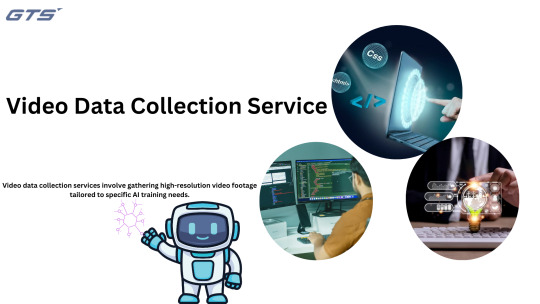
Introduction:
In the age of artificial intelligence (AI) and machine learning, data serves as the cornerstone of innovation. Among the various forms of data, video data has emerged as an essential resource for training AI models across numerous sectors, including autonomous vehicles, surveillance, robotics, and healthcare. To create high-performing AI systems, organizations depend on specialized video data collection services that deliver high-quality, diverse, and scalable datasets.
What Are Video Data Collection Services?
Video Data Collection Services encompass the acquisition of high-resolution video footage tailored to meet specific AI training requirements. These services involve sourcing, annotating, and curating video datasets that enhance the ability of AI models to recognize objects, movements, emotions, and behaviors. Companies such as GTS.AI focus on collecting customized video datasets to ensure that AI algorithms are provided with accurate and pertinent training data.
Why Is Video Data Collection Important for AI?
1. Enhancing Computer Vision Models
AI applications, including facial recognition, object detection, and gesture analysis, rely heavily on video data. High-quality datasets ensure that models are trained in a variety of environments, lighting conditions, and scenarios, thereby increasing their robustness and reliability.
2. Training Autonomous Systems
Self-driving vehicles, drones, and robots necessitate extensive video data to navigate their surroundings safely. Video datasets enable these AI-driven systems to detect obstacles, identify road signs, and comprehend pedestrian behavior.
3. Advancing Healthcare AI
Video-based AI models play a crucial role in medical imaging, patient monitoring, and surgical automation. Accurate and well-annotated video data can greatly enhance early disease detection and telemedicine initiatives.
4. Improving Surveillance and Security Systems

AI-enhanced surveillance systems utilize video data for threat detection, anomaly identification, and public safety monitoring. The quality of the dataset directly influences the precision and effectiveness of these systems.
Essential Characteristics of a Trustworthy Video Data Collection Service
1. Tailored Solutions
An effective service should customize video data collection to meet specific use cases, ensuring that datasets are aligned with the unique requirements of each project.
2. Comprehensive Dataset Diversity
The datasets should encompass a wide range of demographics, environments, and conditions to facilitate the development of an inclusive AI model.
3. Superior Annotation Quality
Accurate labeling of video data is crucial for enhancing the precision of machine learning models. Services should offer annotation capabilities such as bounding boxes, object tracking, and activity recognition.
4. Flexible Scalability
A dependable service should provide scalable data collection options suitable for both startups and large enterprises, accommodating the increasing demands of AI.
5. Adherence to Compliance and Ethical Standards
Video data collection must comply with legal and ethical standards, ensuring the protection of privacy, security, and obtaining proper consent during the data acquisition process.
Selecting an Appropriate Video Data Collection Partner
The choice of a service provider is crucial for obtaining high-quality datasets. Organizations such as GTS.AI focus on video dataset collection, providing scalable and tailored solutions that equip AI models with precise data. Whether your requirements involve video data for autonomous vehicles, intelligent surveillance, or sophisticated robotics, collaborating with a reliable provider guarantees that your AI model receives optimal training resources.
Conclusion
Video data collection services represent a significant advancement in AI development. As technology progresses, the need for varied, high-quality video datasets will persistently increase. Companies and AI developers must prioritize effective data collection strategies to ensure their AI models operate proficiently in practical scenarios. For those seeking professional video data collection services, investigating specialized offerings like those from Globose Technology Solutions can enhance the competitive advantage of your AI initiative.
0 notes
Text
0 notes